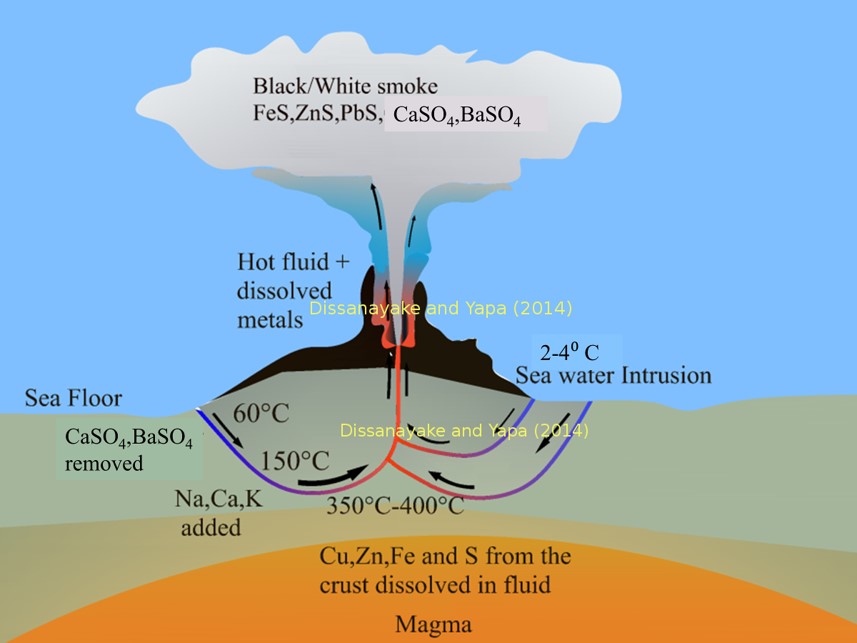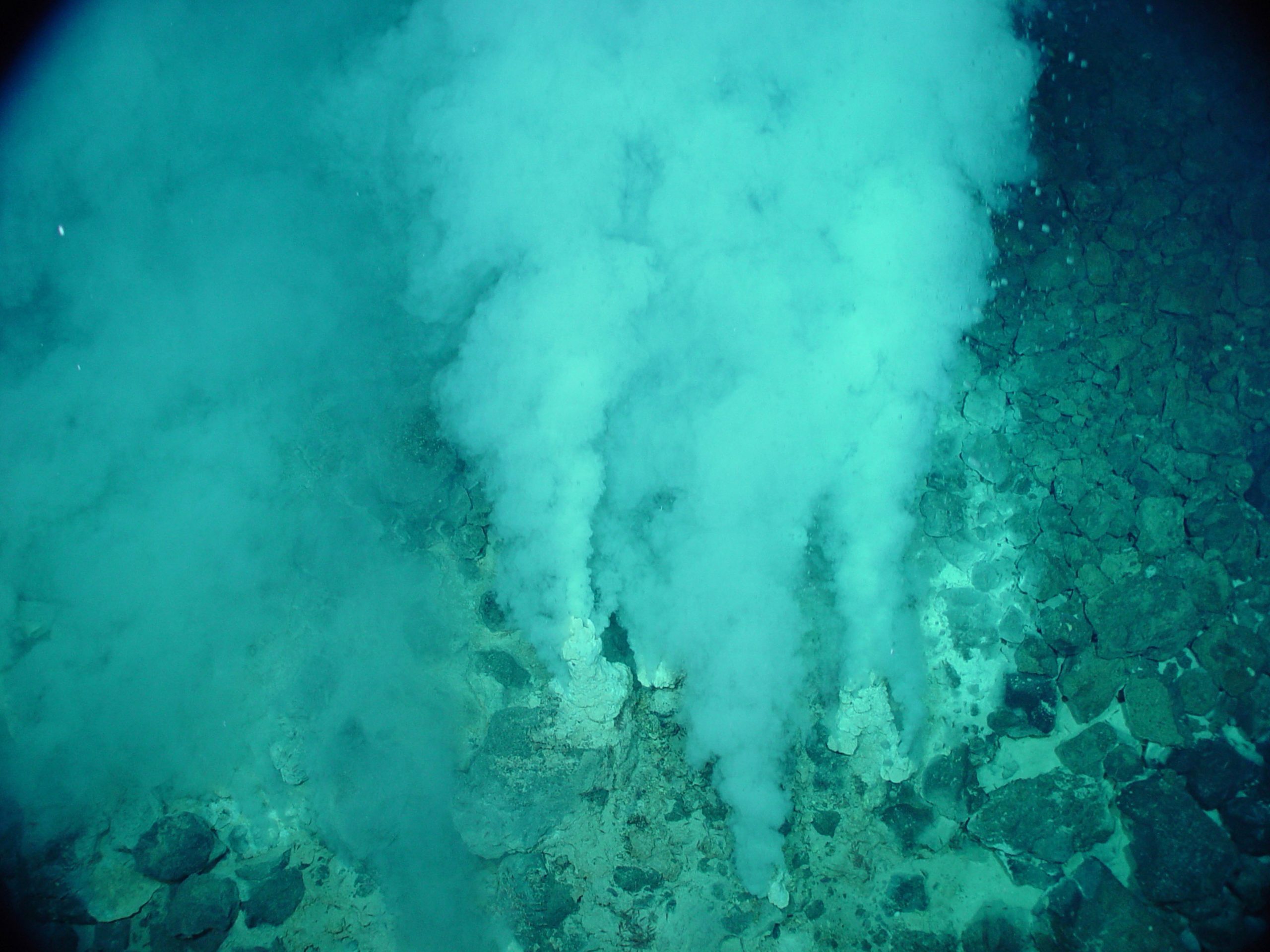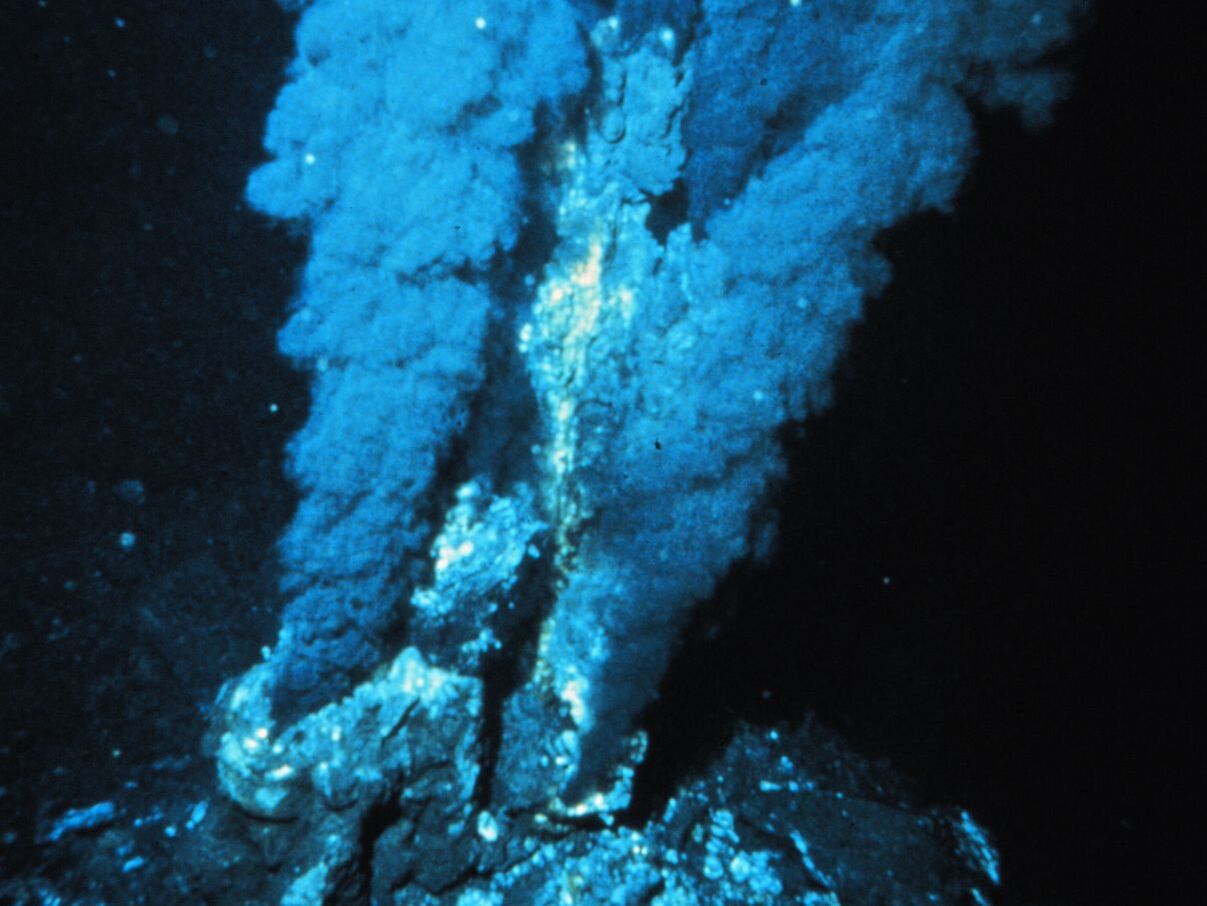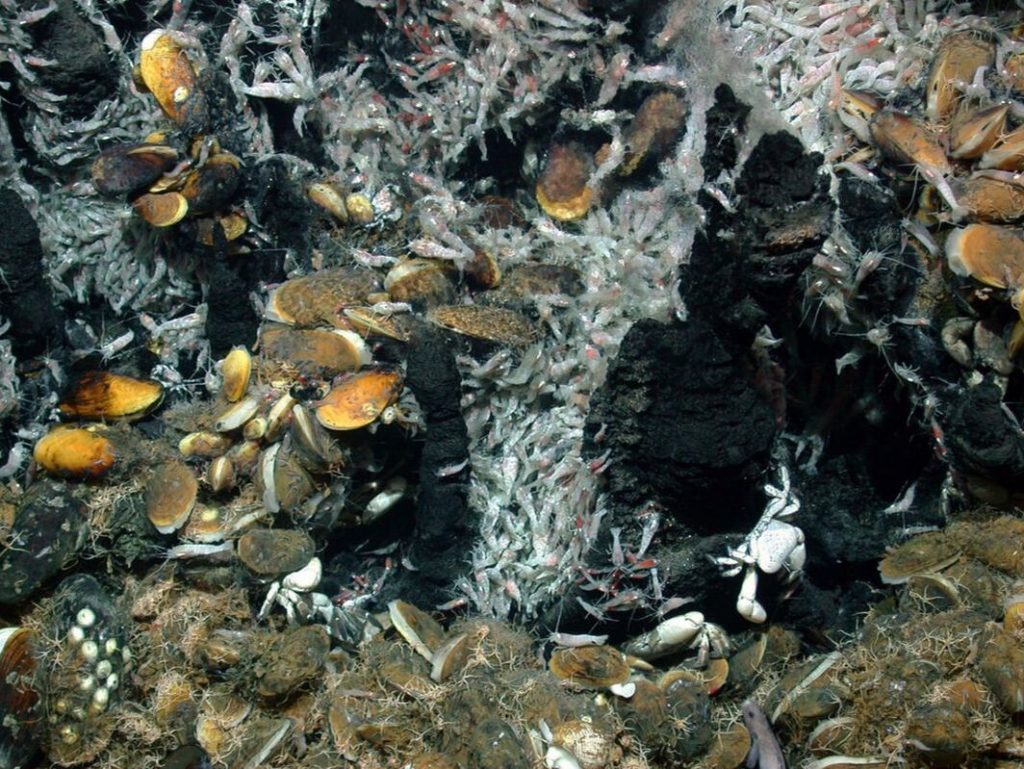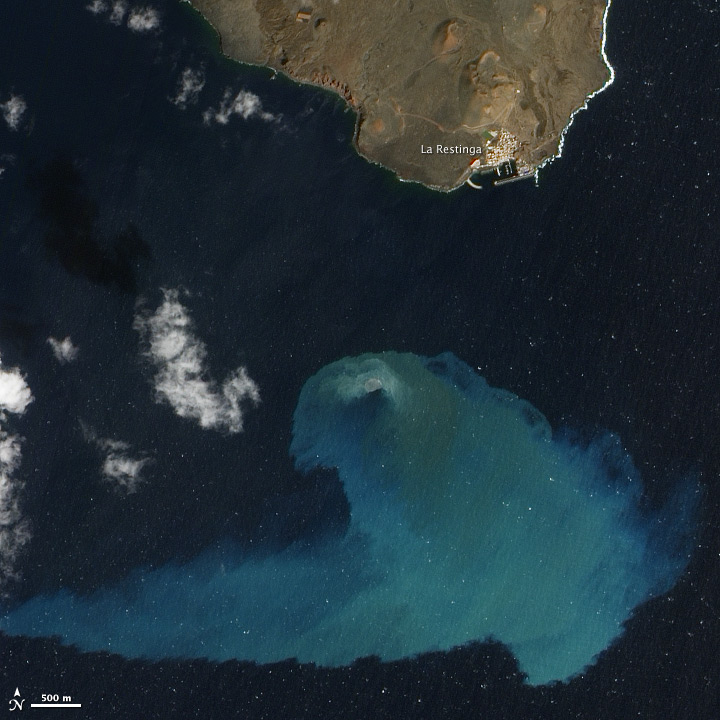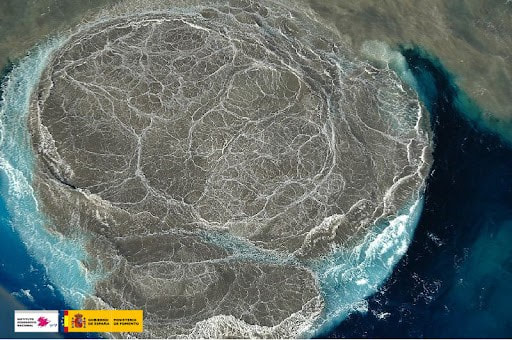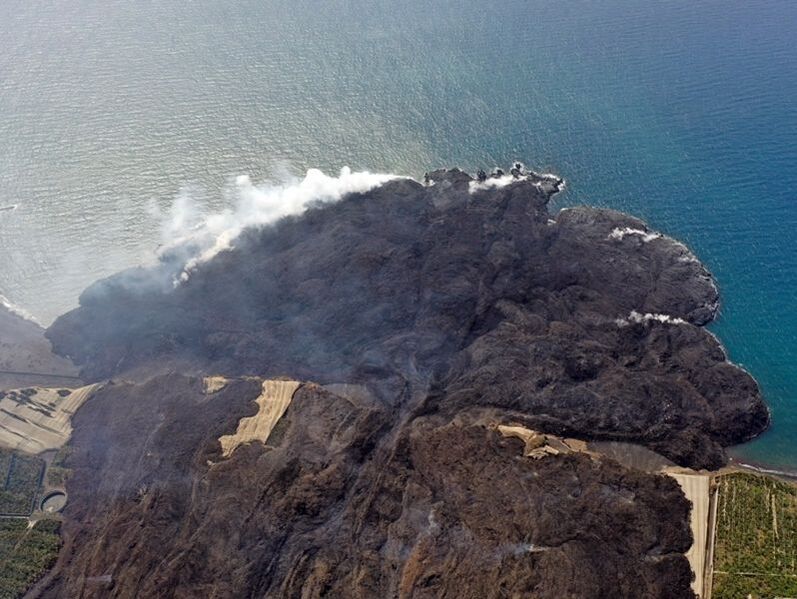Volcanoes and the Sea
As divers, we are of course primarily interested in what we can find under water. With 70% of the earth’s surface covered by water, it is not surprising that most volcanoes are also underwater. Most of these are not even known, only very rarely does one come close enough to the surface for us to see the effects directly. An example of this is the Tagoro volcano, which arose off the coast of El Hierro in 2011.
Easier to observe are the places where lava has flowed from land into the sea. What exactly happens there, we look at the example of the various volcanic eruptions on La Palma within a century.
But because most of the volcanism is buried deep in the deep sea, let’s start with these deepest volcanic phenomena: the black and white smokers.
Volcanism in the deep sea
Far below what humans can see, there are more volcanoes than are known to us. Volcanic activity is particularly common along the mid-ocean ridges, where plates collide. The seabed is anything but calm – gases and rocks are constantly being pushed upwards from the primary crust. The fact that they have little influence on our lives today does not mean that we humans have nothing to do with them: Possibly the origin of life lies here in the deep sea.
What occurs in the deep sea is divided into black and white smokers.
Black smokers
The black smokers, mainly found around the mid-ocean ridges, are hydrothermal vents. In them, hot magma meets seawater. When mixed, it becomes explosive, the magmatic water rises to the surface and meets infinite amounts of sea water. The minerals contained in it form a kind of clouds and sometimes large tubes. The nutrients brought in by the magma, through chemical compounds with the oceanic water, enable the formation of complex ecosystems that function independently of sunlight.
White smokers
At the white smokers, instead of the black mist, a white vapor rises, which is known as water vapor on land. These alkaline springs are gases resulting from the reaction of water with bedrock – there is no direct contact with magma. At 40°C – 90°C they are significantly cooler than their colleagues, the black smokers.
Role in the evolution of life as a whole(?)
Underwater Volcanoes
Tagoro, El Hierro 2011
The first vent opened about 5km offshore in the area known as the “Mar de Las Calmas” – the quieter south side of the island which is also home to some well known dive sites. The eruption started at a depth of 1 km, so little of it was initially felt on the surface. Over the next few days and weeks, however, new vents opened up, closer and closer to the coast and in ever shallower water. In the 147 days that the eruption lasted, the underwater landscape off the coast of La Restinga has changed forever.
Due to the extremely steep undersea geography of the Canaries, the volcanic activity was limited to depths that are unfortunately not suitable for diving. Although a lava dome has built up in the coastal zone, which protrudes closer to the surface – with today’s 89m depth it is well beyond the limits of scuba diving.
Impact on marine fauna
Many dead fish floating on the surface were observed during the eruption. The reason for the fish deaths was not explosions, but the lack of oxygen in the water in the immediate vicinity of the eruption.
What seemed like a sad catastrophe for the fish world turned out to be quite the opposite a short time later. Fish stocks recovered surprisingly quickly after the eruption, and anecdotally it is reported that around the volcanic cone there are some of the greatest abundance of fish today. Of course, the question also attracted researchers who couldn’t pass up such a rare opportunity. Changes in the chemistry were definitely detectable, for example an increased iron content in the immediate vicinity of the volcano and a somewhat lower pH value of the water at the same place. However, since these phenomena were very local, among other things, they do not suffice as an explanation for the rapid recovery of the fish population. Much research remains to be done to understand the complex interactions between undersea volcanism and marine ecosystems.
Tonga: Record eruption in the Pacific Ocean, 2022
Volcanic eruptions in the sea are not always as gentle as the one on El Hierro. In early 2022, a huge explosion occurred near the Tonga Islands, 65km from the capital: the undersea volcano Hunga Tonga-Hunga Ha’apai had erupted. A massive ash cloud rose several kilometers away, a tsunami wave formed that could be felt around the world, and sound waves from the explosion were still measurable even in Europe.
When lava flows into the sea
The coasts in volcanic regions are definitely worth seeing: where lava flows into the sea, interesting rock formations are created. Depending on the composition of the lava, intricate tongues of lava can form, or rugged, pointed gravel landscapes. Where it solidifies, pillow lava forms, and clumps of lava become the most bizarre formations. Where hollows form, black sand is often deposited and forms small beaches.
Volcanic coasts are extremely interesting – but it gets even more exciting when you can imagine what happened when lava and sea collided.
The moment lava reaches the sea from an active volcanic eruption, it initially creates an impressive spectacle: the lava, which is around 1000°C hot, literally evaporates the seawater, forming an enormous cloud of gas. It consists mostly of water vapour, but dangerous products such as hydrochloric acid can also be formed when the molten rock reacts with the salt water. The sulfur contained in the lava and other substances such as fluorine and bromine can also react with the water and form gases that are hazardous to health. It is important here, however, that the concentration of these gases decreases very quickly with distance due to the dilution in the air, and normally represents a very local problem. You should always watch such an event from a safe distance upwind…
And while these gases can become hazardous to people in close proximity, marine life remains largely intact. Of course, all sessile creatures in the zone will be covered by lava, but anything with fins just floats away. The interplay of the two gigantic elemental forces, lava and water, has been part of the cycle of life since time immemorial. At first glance, the whole thing looks like desolate destruction, but the lava cools quickly in the seawater and life is reclaiming the zone. Fish can be seen days after the lava enters the sea, and the basics of the food chain start anew, attracting many creatures again. Younger lava is often extremely structured and offers a habitat for so many sea creatures, which is often reflected in the very colorful and exciting “growth”.
Many lava formations can be admired in shallow water (0-20m). Sometimes, however, they also reach significantly more depth: Even at a depth of 50-100m, lava tongues can still be observed. One layer of lava lays on top of the other and forms a high cone that can be seen from afar. The lava that forms such forms is very viscous – friable and more solid layers are formed, which are clearly distinguishable from each other.
The high, dark mountains of the stratovolcanoes tend to sometimes violent explosive eruptions because of the viscosity of their magmas. Nevertheless, millions of people around the world live in close proximity to stratovolcanoes.

